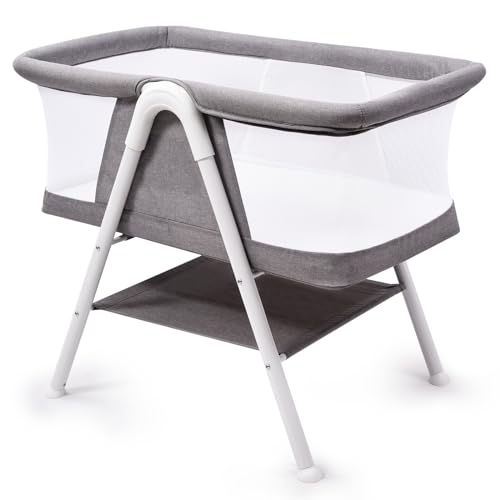One Tots And Cots Success Story You'll Never Believe
Tots and Cots: A Comprehensive Guide for Parents
When it pertains to making sure a safe and comfortable sleeping environment for infants and young children, the options moms and dads make— ranging from cribs to cots— can significantly affect their wellness. Today's post dives deep into the intricacies of choosing the very best sleeping arrangements for tots, emphasizing safety, design, functionality, and how these options evolve as a kid grows.
Comprehending Tots and Cots
Tots usually refer to young kids, especially toddlers aged between 1 to 3 years, while cots are the sleeping plans specifically created for babies and young children. The suitable sleeping equipment for this age group consists of various kinds of cots, cribs, and young child beds.
Kinds of Cots
Various styles exist to fulfill the varied needs of both parents and children. Below is a list laying out the most common kinds of cots offered:
Standard Crib
- A conventional crib is developed for infants and typically includes sides that can be gotten used to different heights.
Convertible Crib
- This type of crib can convert into a toddler bed, daybed, or full-sized bed as the child grows, making it a long-term investment.
Portable Crib
- Also understood as travel cots, these are light-weight and quickly collapsible, perfect for taking a trip or smaller sized home.
Co-Sleeper
- A co-sleeper crib attaches to the side of the parents' bed, enabling easy access while ensuring the baby has a different and safe sleeping area.
Toddler Bed
- A young child bed is a little bed that looks like a basic bed but is designed specifically for toddlers, usually featuring security rails.
Mini Crib
- Mini cribs are smaller than basic cribs, making them an excellent option for tight spaces, but they appropriate for infants only.
Safety Considerations
Ensuring safety is vital when choosing a cot for a kid. Here are important security standards parents need to consider:
- Check for CPSC Certification: Ensure that the cot abides by the Consumer Product Safety Commission (CPSC) requirements.
- Avoid Drop-Sides: Cots with drop-sides have been connected to security hazards, and the most recent security regulations forbid them.
- Utilize a Firm Mattress: A company bed mattress decreases the threat of suffocation and must fit comfortably within the cot.
- Keep Bedding Simple: Use a fitted sheet and prevent pillows, comforters, and packed animals that can posture suffocation hazards.
- Follow Weight and Age Guidelines: Ensure the child has not surpassed the cot's weight limit and is still within the suggested age.
Transitioning from a Cot to a Toddler Bed
The shift from a cot to a toddler bed can be an emotional turning point for both moms and dads and children. Here are steps to relieve the shift:
Timing
Choosing when to shift can be subjective, however it's usually suggested to make the switch between 18 months and 3 years, based on elements like:
- Physical Ability: If the child is climbing out of the cot.
- Potty Training: Consider transitioning if the child is potty training and needs easier gain access to.
- Behavior: Exhibiting indications of maturity, such as following instructions or revealing a desire for self-reliance.
Tips for Making the Transition Smooth
Involve Your Child: Let the kid pick their brand-new bed linen or bed decoration to instill excitement about the modification.
Keep Routine Consistent: Maintain the kid's bedtime routine to provide convenience during this period of change.
Discuss the Change: Discuss the transition to a toddler bed positively, making it sound like an excellent experience.
Precaution: Place the bed versus the wall or use bed rails to prevent falling throughout sleep.
Choosing the Right Bed
When selecting a young child bed, moms and dads require to consider factors like:
- Height: Low-profile beds are perfect for toddlers who may fall out throughout sleep.
- Durability: Ensure the bed can withstand active play along with sleep.
- Design and style: Choose a style that matches the kid's space and is interesting the child.
Choosing the best cot for your little one can be a difficult process, however comprehending the alternatives available, key security factors to consider, and the best timing for transitioning to a young child bed can make this journey easier for moms and dads. Investing effort and time into these choices will ensure that your kid has a safe, comfortable, and nurturing sleep environment.
- * *
FAQs
1. What is the distinction between a cot and a crib?
- A cot is generally a smaller sized bed created for younger toddlers, while a crib is a larger bed that is usually suitable for babies as much as 3 years of ages.
2. When should click hyperlink move my child from a crib to a young child bed?
- The shift time is generally in between 18 months and 3 years; this change is based upon the child's physical capabilities and behavioral signs.
3. How can I guarantee my child is safe while sleeping?
- Always abide by safety standards, use a company mattress with a simple bedding arrangement, and monitor the cot's weight limitation.
4. What should I do if my child tries to climb out of the cot?
- If your child is climbing up out, it might be time to think about transitioning to a young child bed to prevent falls.
5. Can I use the exact same bed mattress when transitioning?
Normally, it is best to replace the crib bed mattress with one that specifies to the toddler bed. Ensure it fits snugly and abides by security standards.
- *
By thinking about these elements, parents can design healthy sleep practices and supply their kids with a secure environment that promotes restful sleep. Purchasing quality sleeping plans will add to the child's total development and joy.
